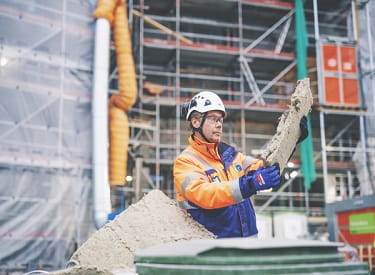08/05/2023
In 2020, the total waste generated in the EU by all economic activities and households amounted to 2,153 million tons. Almost 38% of that amount was generated by construction and demolition industries. To shrink this number, we need to work together, writes Juha Laihonen, OC PAROC Circular Economy Lead, Nordics

Recycle, recycle, recycle. That is the message to every household in the EU. However, the message to companies can sometimes be a bit different.
In fact, the European Union’s waste legislation focuses mostly on household waste while the cost of landfilling industrial waste is often lower than that of recycling or incineration. According to an article by the Ellen McArthur Foundation, the average cost of recycling (excluding taxes) in France is EUR 144 per ton compared to EUR 105 for incineration – and EUR 68 for landfilling.
Landfilling might be cheap, but the cost is far too high to pay. I have been working in the construction industry for 35 years in different roles and witnessed the change in our environment. We should do everything in our power to shift to a circular economy and away from landfills. Even if legislation does not always incentivize companies and industries economically to reduce and retrieve waste, there is a far bigger incentive for doing so: our planet.
No waste to landfills by 2030
We at OC PAROC have set a goal to not dispose of any waste in landfills by 2030. I’m proud to be part of making that goal a reality. For example, our REWOOL system has been in place in Sweden since 1996, in Finland since 2019, and we have just recently launched a REWOOL pilot project with selected customers in Germany. We are currently developing this take-back system for other selected markets as well. We also utilize customer offcuts and product waste to manufacture blowing wool, transform internal process waste and external waste into briquettes and use product waste, damaged products and customer offcuts as raw material for new stone wool products.
To find new and innovative possibilities of collecting and utilizing even more customer offcuts and demolition waste in stone wool production, it is important to have a deep understanding of how building sites work. It is still not rare to find plastic coffee mugs amongst offcuts. It should be the whole building industry's joint effort to make recycling and sorting as easy as possible on building sites.
Pushing circular economy to the next level
This year, OC PAROC has established a dedicated team for driving the circular economy forward. Our team focuses on developing roadmaps for both expanding the use of offcuts and finding sustainable ways to utilize demolition wool in our production. In addition, one of our important tasks is to search and find new ways for other industries to utilize our by-products and for us to utilize theirs.
Now is not the time to sit back and think that, as long as landfilling is cheap, we don’t need to take action. Now is the time to push the circular economy to the next level.

Juha Laihonen
Circular Economy Lead, Nordics
OC PAROC
Sources: